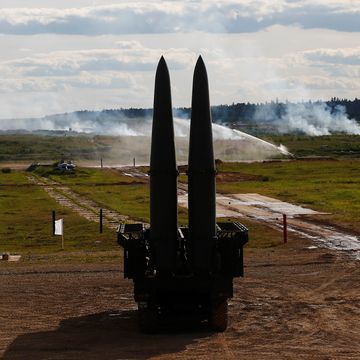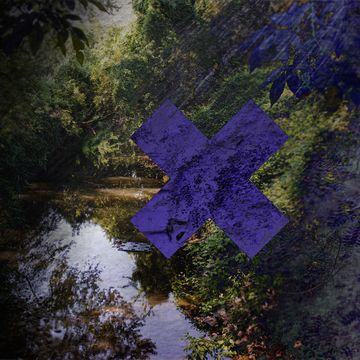- Scientists have mapped the ocean floor where nuclear tests took place in 1946 and 1954.
- The tests, conducted at Bikini atoll, left huge craters and are still plainly visible today.
- Atmospheric testing, including underwater tests of nuclear weapons, was banned in 1963.
For the first time, scientists have mapped the environmental toll of underwater nuclear tests conducted in the 1940s and 1950s. Using advanced sonar, scientists scanned the underwater nuclear test sites at Bikini atoll. They found huge craters left by undersea nuclear tests, as well the wreckage of ships that had been anchored around the blast zone.
The research was revealed at the 2019 meeting of the American Geophysical Union in San Francisco. Scientists travelled to the atoll in June 2019 and mapped the area where four tests took place with advanced, high-resolution sonar systems. According to Space.com, the National Park Service surveyed the area in the 1980s and 1990s but were unable to distinguish a crater.
The advanced sonar, however, was able to create a digital model of the undersea floor with a resolution of one pixel per meter. At that level of resolution, craters left over from nuclear tests were very clear. Also visible were warships sunken during the tests, including the aircraft carrier USS Saratoga.
The team scanned for evidence of the first two tests at Bikini, part of 1946’s Operation Crossroads. Crossroads saw two nuclear bombs detonated at the atoll while surrounded by a number of decommissioned or captured American, German, and Japanese warships. The first test, Able, was a 23 kiloton atomic bomb dropped from a B-29 bomber and set to explode at 1,500 to 2,000 feet. The explosion was 50 percent more powerful than the bomb dropped on Hiroshima. It sank five warships but according to scientists there is no enduring sign of the test on the seafloor.
The second test, known as Baker, also saw a 21 kiloton device detonated at the atoll. This bomb was detonated underwater and created an enormous tower of water and tsunami that sank ten ships, including battleships and aircraft carriers. According to scientists, the Baker test left a crater eight meters deep and approximately 700 meters wide.
Researchers also surveyed the site of the infamous Castle Bravo test, the first atmospheric test of a hydrogen bomb. The Castle Bravo bomb was exponentially more powerful than previous tests, and had an estimated yield of 15 megatons—or 15,000 kilotons. Although detonated on land, the bomb was powerful enough to wipe three small islands off the face of the Earth. It also left a crater 25 to 30 meters deep and 1,400 meters in diameter (about 9/10ths of a mile.) Here's remastered footage of the test:
The Castle Bravo test spread radiation far and wide, with radiation detected as far away as Australia and Japan. The Japanese fishing trailer Daigo Fukuryū Maru was accidentally caught in the path of the fallout with several crewmembers growing sick with radiation poisoning and one eventually dying.
Atmospheric nuclear tests were banned in 1963, and all subsequent nuclear tests took place underground.

Kyle Mizokami is a writer on defense and security issues and has been at Popular Mechanics since 2015. If it involves explosions or projectiles, he's generally in favor of it. Kyle’s articles have appeared at The Daily Beast, U.S. Naval Institute News, The Diplomat, Foreign Policy, Combat Aircraft Monthly, VICE News, and others. He lives in San Francisco.















